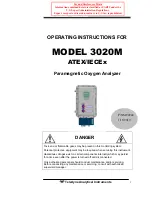
8-1
IM DL350-01EN
8 Saving and Loading Data
You can save the following types of data.
• Waveform data
• Setup data
• Screen capture data
• Snapshot waveform data
• Automated measurement data
• FFT analysis results
You can load the following types of data into the instrument.
• Waveform data
• Setup data
• Snapshot waveform data
You can also rename and copy files and set or clear protection on files.
Storage Media You Can Save and Load From
The instrument can access the following five types of storage media for saving and loading data.
SD Memory Card (SD-Card)
The SD memory card inserted into the SD memory card slot of the instrument.
The SD memory card insertion status is displayed in the upper left of the screen.
•
: SD card installed
•
: SD card not installed
USB Storage Medium (USB-0/USB-1)
A USB storage device that is connected to the instrument’s USB port. USB2.0 mass storage devices compatible
with USB Mass Storage Class Ver. 1.1 can be connected to the instrument.
Network Drive (Network)
A storage device on the network. You can use a network storage device by connecting the instrument to an
Ethernet network.
Notes about Using USB Storage
• Connect USB storages device directly, not through a USB hub.
• Only connect a compatible USB keyboard, mouse, or storage device to the USB port for peripherals.
• Do not connect and disconnect multiple USB devices repetitively. Provide a 10-second interval between
removal and connection.
• Do not connect or remove USB cables from the time when the instrument is turned on until key operation
becomes available (approximately 20 to 30 seconds).
• You can use USB storage media that are compatible with USB Mass Storage Class Ver. 1.1.
• The instrument can handle up to four storage media. If the connected medium is partitioned, the instrument
treats each partition as a separate storage medium. As such, the instrument can handle up to four
partitions.
• Do not connect USB storage media to the instrument during SD recording or when you will start SD
recording.
















































